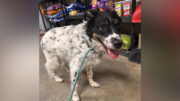LOS ANGELES (AP) – California regulators asked the public Wednesday to critique proposed regulations that would – eventually – allow self-driving cars that lack a steering wheel or pedals on public roads.
The message: The regulations still need a lot of work.
In a workshop at the Capitol, the state’s Department of Motor Vehicles heard criticism from companies developing the cars of the future, as well as skeptics who worry the government is being pushed into a hasty embrace of imperfect technology.
Self-driving cars are still prototypes, and California’s roads and highways are their real-world testing grounds. The most aggressive developers suggest the technology could be ready for market within a year or two.
The regulations that department officials drafted govern how everyday people can use the cars, once companies and federal regulators conclude they are safe. The rules are closely watched nationally because California is both a huge consumer market and a hotbed for the technology’s development.
The department was supposed to have finalized the regulations by Jan. 1, 2015. They are overdue partly because the technology is so new and complex that regulators don’t know how to show cars are as safe as human drivers.
For prototype testing, regulators require a trained driver behind the wheel who could take over if needed. Now, the department is trying to balance safety with the interests of companies in a rapidly evolving industry that could transform how people get around.
An initial draft of the public use regulations released in December required a licensed driver for the cars. Companies including Alphabet, where the pioneering Google self-driving car project lives, bristled. Its ultimate vision is a car without a wheel or pedals.
The department updated its proposal in September. The new language, the subject of Wednesday’s hearing, moved from cautious to optimistic. Gone was the requirement of a licensed driver; California was open to permitting cars that could drive around without a person inside – if the federal government agreed that the make and model was safe.
The pivot came after a close collaboration between the state motor vehicle department and the National Highway Traffic Safety Administration, which released a model regulatory framework for states last month.
In a show of unity Wednesday, top federal self-driving car officials were among the first to speak. They detailed their proposal, which features a 15-point safety assessment. Among other things, the assessment asks automakers to document how the car detects and avoids objects and pedestrians and how its backup systems will cope should the software fail.
While the assessment is voluntary, several automaker representatives complained that California’s rules would effectively make it mandatory. Automakers want to self-certify their cars are safe with minimal regulatory oversight, keeping with the federal model for human-driven cars.
At the same time, a representative of the nonprofit Consumer Watchdog group said California’s proposal to adopt the federal approach fell short – because the safety assessment was not mandated.









































